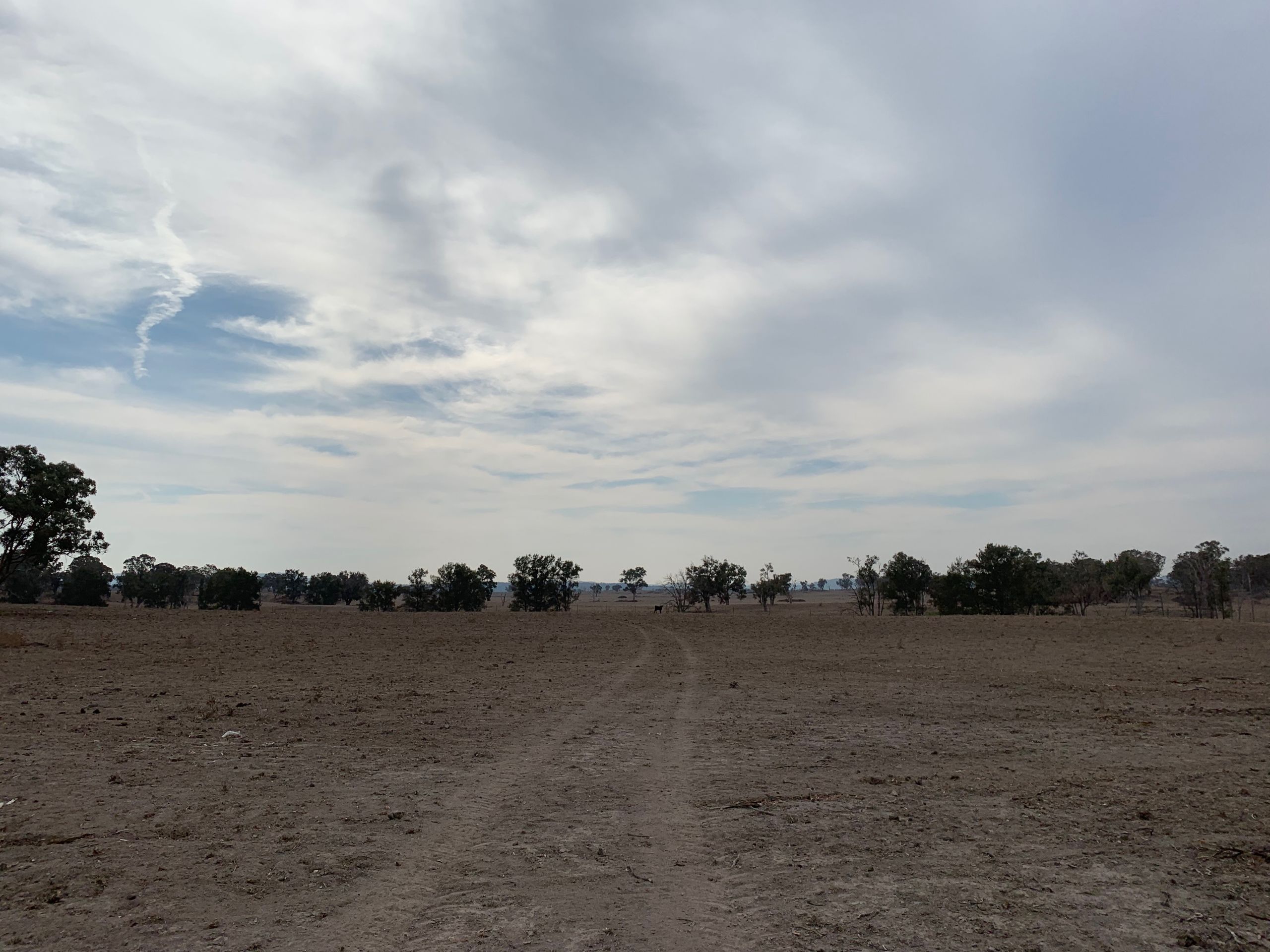Of Droughts and Absent Rains
Farmers out west are fighting for survival while water awareness in the city has only just begun.

The Farm
Stony Batter Cattle Farm
Northwest New South Wales
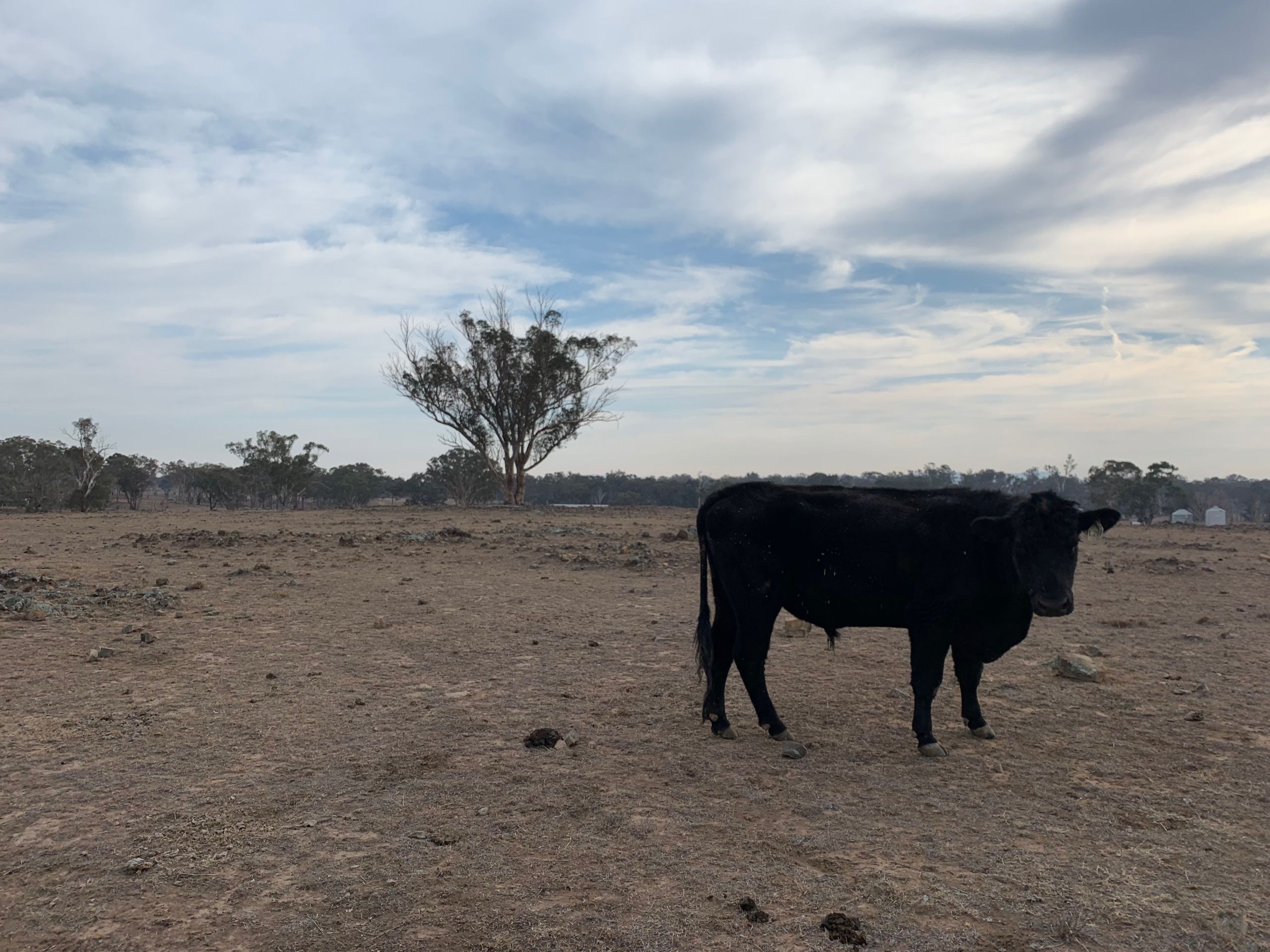
Farm owner, Chris Navin, is standing in the middle of the Gwydir River. Beneath his feet the last struggling blades of grass push upwards through the soft, dry sand of the riverbed. In the distance, a few forlorn cows from the neighbouring property venture down into the riverbed in search of grass. Disappointed by blades too sparse to graze on, they make the slow pilgrimage back up the bank.
.
Chris should be submerged where he’s standing, but the river hasn’t flowed for twelve months. Below average rainfalls have left the property dry beyond measure. All that remains of the property’s dams are cracked, dry craters, collecting the abundance of dust that sweeps the landscape.
.
The struggle at Stony Batter is unimaginable, but it is not unique. For many farmers across drought stricken New South Wales, the likelihood of running out of water is a grim reality. A reality far removed from the Inner Sydney experience, where the most lenient water restrictions have only recently come into play. With a dry summer looming, and a lack of urban awareness to the threat the drought poses, the divide between the city and bush is greater than ever.
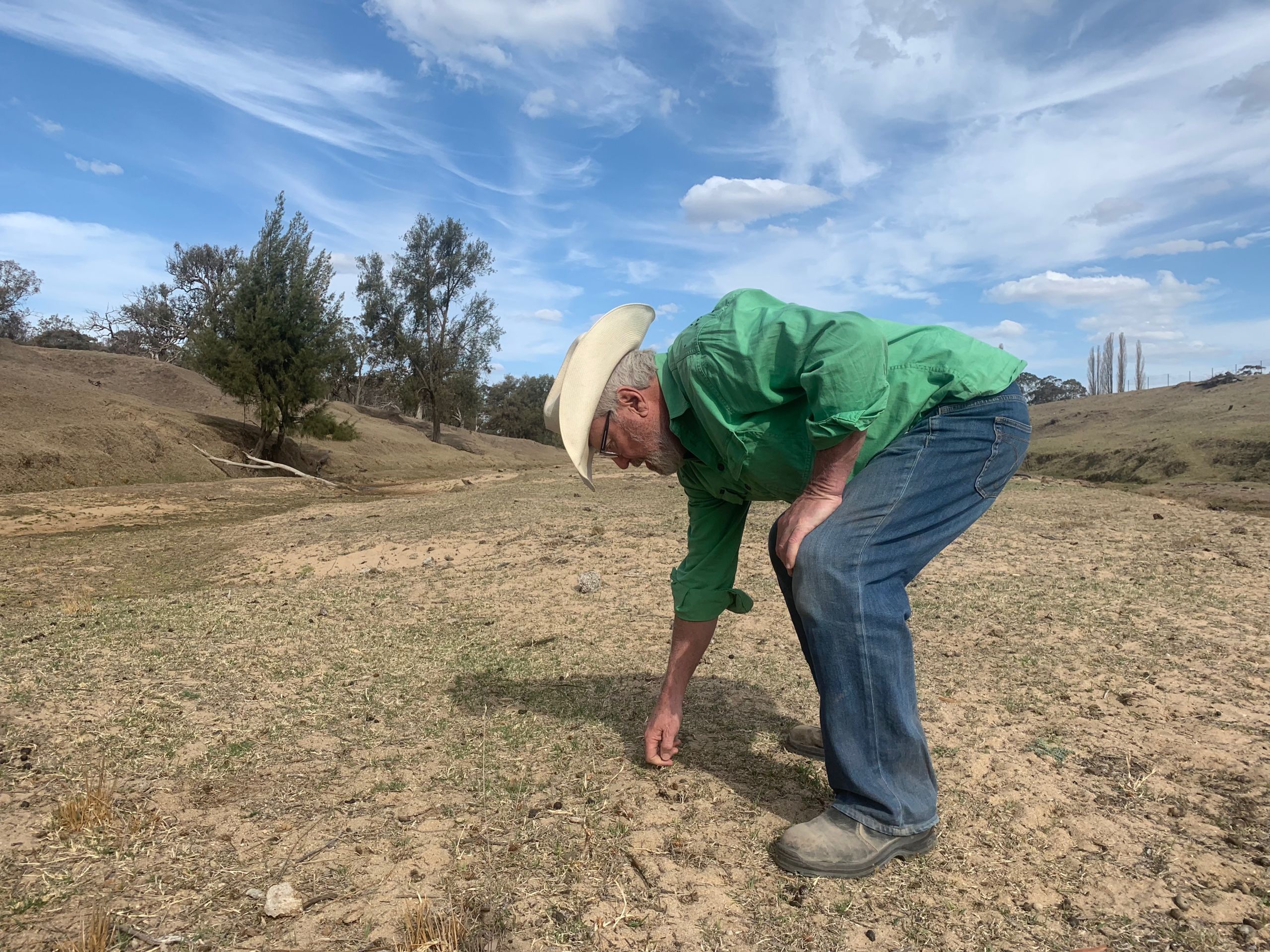
Chris Navin standing in the Gwydir River. source: original
Chris Navin standing in the Gwydir River. source: original

All of the dams on the property are completely dry. source: original
All of the dams on the property are completely dry. source: original
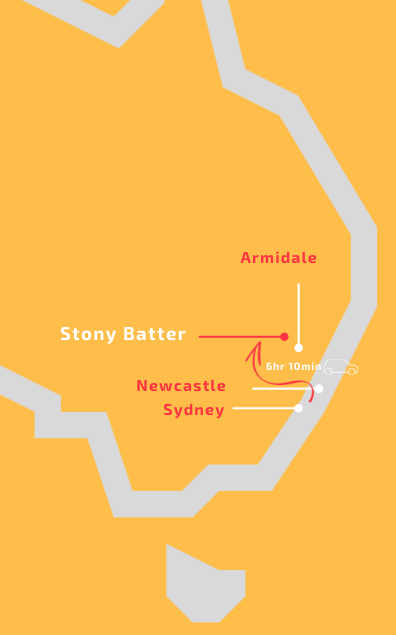
source: original
source: original

The expanse great expanse of dust at Stony Batter. source: original
The expanse great expanse of dust at Stony Batter. source: original
blank
Blank
Droughts are ingrained in Australia's identity, romanticised in our collective psyche, drummed into us through our literature and imagery.
Dorothea Mackellar's words, first published in 1908, echo throughout the nation's rhetoric;
I love a sunburnt country,
A land of sweeping plains,
Of ragged mountain ranges,
Of droughts and flooding rains.
But, the flooding rains in New South Wales critical catchment areas have been noticeably absent for too long.
The Gwydir River, life blood to Stony Batter, runs dry as far as the eye can see. Explore the 360 photo below.
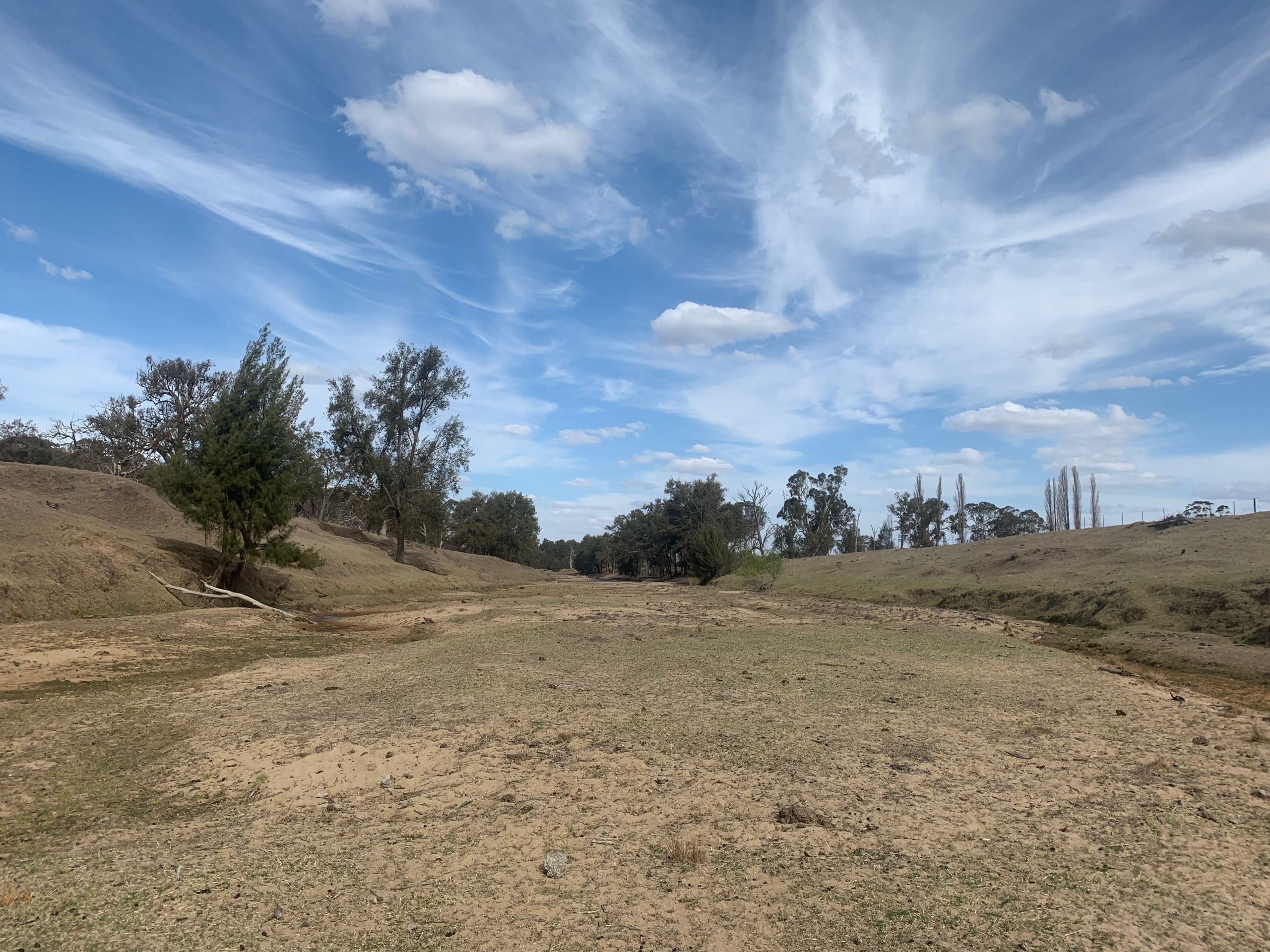
Chris has watched as his once lush, green property has deteriorated into dust. Grazing paddocks are a distant memory and all of the independent dams on the property have dried up.
Despite this, Chris still counts himself lucky, as the river that borders the property has “still got water in various holes” so that the cattle can be watered from the natural resources. But with below average rainfall predicted by the Bureau of Meteorology, these sparse resources won’t sustain his already diminished herd for long.
The inevitability of running out of water has already had disastrous effects on some of Chris’s neighbours.
The cost of fresh drinking water is yet another burden caused by the drought, piled on top of the thousands of dollars each week spent on crucial feed supplies for the herd.

Cattle that Chris purchased from a neighbour that could no longer afford to keep them. source: original
Cattle that Chris purchased from a neighbour that could no longer afford to keep them. source: original
The financial impact of the drought places immense pressure on farm owners like Chris to sustain the business, but the tangible reality of the drought kicks in when once thriving cattle succumb to the extreme conditions.
Calving season at Stony Batter has highlighted this struggle. Chris and his farm manager Tony have been left to hand raise six orphaned calves, with many of their prime breeding stock lost due to exhaustion and drought related complications.
Losing breeding stock means losing future production potential for Chris, and an increased strain on the cattle industry at large. The impact of reduced stock will also have long lasting affects on the farms ability to continue production should it survive the impending summer.
For more insight into life on the farm, explore StonyBatterDrought, the Instagram account following Stony Batter's drought struggle.
"Four millimetres a month, for six months is nothing.
That doesn’t even settle the dust."
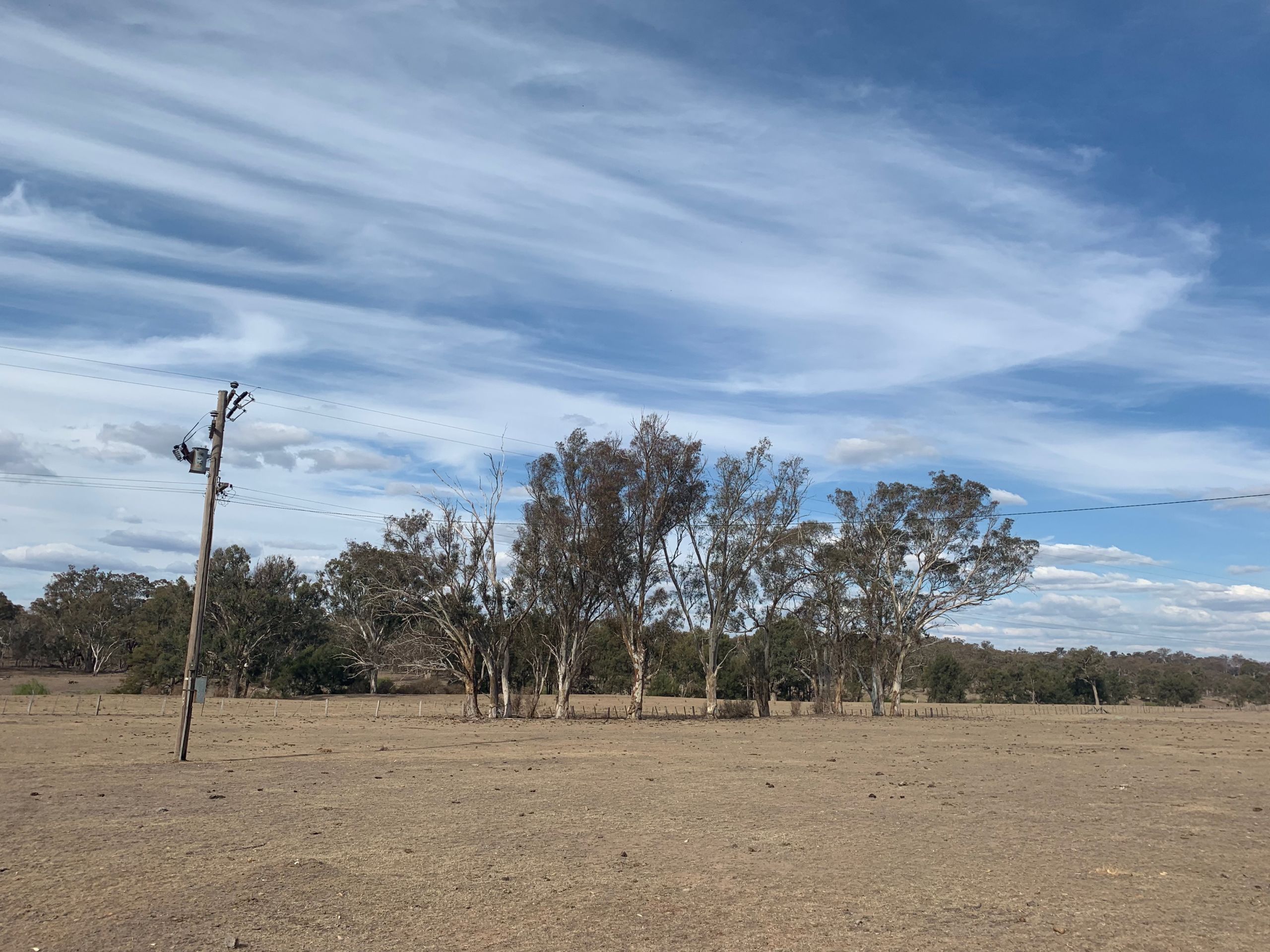
blank
blank
blank
There is no relief in sight for Stony Batter. Dam levels in the surrounding area have plummeted over the last twelve months, including the Copeton Dam where the farm is now forced to source its drinking water at great cost.
Without adequate rain to replenish the remaining pools of water in the Gwydir River, Chris will not be able to sustain the lives of his cattle, and therefore, his livelihood and that of his employees.
Survival out west has become a question of what happens over the next few months, while in the city the conversation about water has only just begun.
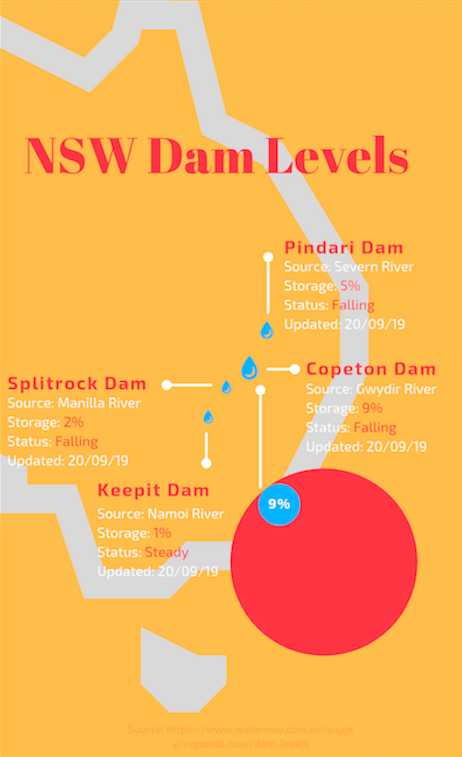
source: original. using information from WaterNSW
source: original. using information from WaterNSW
The City
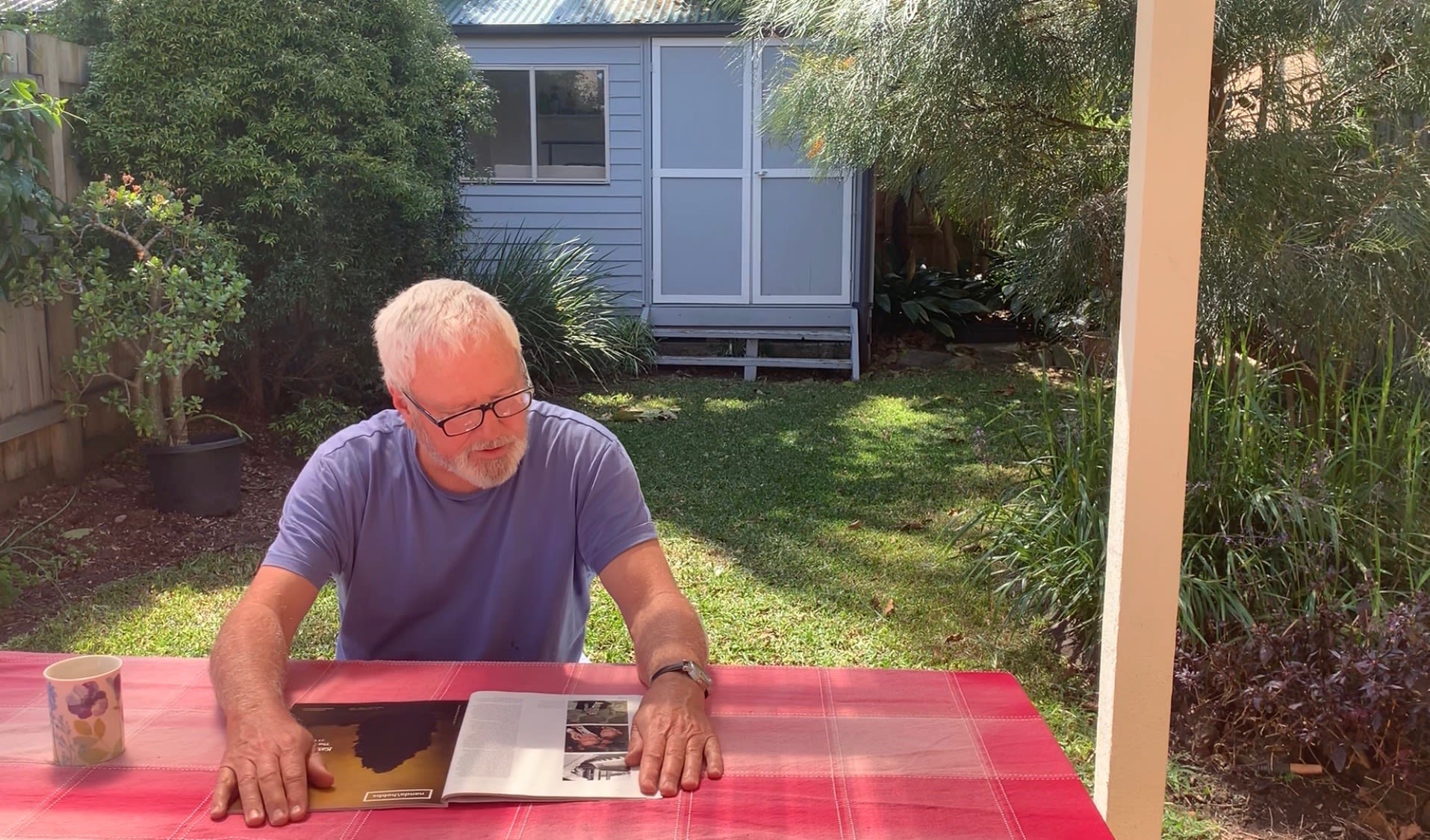
Blank
Blank
Coming back to the city, Chris is reminded of the vast divide between the rural and urban relationship with water.
The divide between the city and the bush that Chris is talking about has ebbed and flowed along with changing weather conditions throughout recent history.
Water restrictions were last introduced in Sydney in 2003, during the Millennium Drought. The restrictions stayed in place until 2006, when dam levels returned to a sustainable volume.
According to Sydney Water, “more than 85% of Greater Sydney’s water supply relies on rain. This means that our water is in short supply during prolonged droughts.” With the dams servicing the Greater Sydney region collectively sitting below 50%, and a dry spring forecast, the ongoing drought conditions pose a threat to urban drinking water supplies.
Due to this risk, Level One water restrictions were imposed on June 1st, with a three-month grace period allowing residents and businesses to adjust before fines of up to $550 are handed out for misuse of water.

Chris finds coming back to the city a relief from the harsh conditions. source: original
Chris finds coming back to the city a relief from the harsh conditions. source: original
...
.
.
What do Level One restrictions mean?
Level One restriction are mostly concerned with outdoor water usage. So what is allowed?
Watering lawns and gardens
- Before 10am and after 4pm using a handheld
hose fitted with a nozzle head.
- Between 10am and 4pm using a watering can
or bucket
- any time with drip irrigation
- anytime with a watering system
Cleaning hard surfaces (paths and driveways)
- Spot cleaning only with a high pressure device or hose fitted with a nozzle
Cleaning Vehicles and Buildings
- Any time with a bucket, high pressure device or a hose with a nozzle

Chris’s daughter Madeleine lives in Marrickville in Sydney’s Inner West. Hearing her dad’s struggle with the drought at Stony Batter has increased her awareness of the challenges faced out west, but hasn’t had a considerable impact on her water usage at home.
“I’ve probably thought about it more in the last six months. Because prior to that there was always this notion that - oh it’s just now, it’ll rain eventually.”
.
.
Madeleine isn't alone in her uncertainty about Sydney's current water restrictions, with many city residents aware of the stress on water supplies, but unsure of the details of restrictions.
With much of the conversation in urban communities focusing on the bigger picture of climate change, the immediate affects on rural communities are not garnering significant attention. But, the struggles faced by the rural communities pose as a warning to urban residents of the importance of water as difficult conditions continue.
Sydney's dam levels have continued to fall over the last twelve months and are currently sitting at 16.5% less than the same time last year. As the city faces the same Spring forecast to be hotter and dryer than average, immediate attention to water use is critical, yet awareness seems lacking.
The Future


The sun sets over Stony Batter. source: original
The sun sets over Stony Batter. source: original
It’s Friday evening and the sun has well and truly set over Stony Batter. The red glow of a delivery truck’s brake lights cuts through the darkness, and the sound of feed pellets filling a silo disturbs the quiet night air.
Battling against the drought is a twenty-four hour effort for everyone involved, from farm managers to the delivery drivers. It is a battle with a price tag that has been growing continuously for the last twelve months.
According to the 2018 National Drought Agreement, signed by State and Federal leaders across the nation, support for farming families and communities is a crucial priority throughout continued drought conditions. Yet, many affected by the on going hard conditions, including Chris, do not feel that they are receiving the support they need.
While eyes have been on Prime Minister Scott Morrison's absence from the Climate Summit in New York last month, those most affected by the drought have been raising their voices to demand immediate help from the government.
A grass roots movement from those struggling on the front line of the drought are calling for more attention from Australia's federal government. The Instagram page, The West is Waiting, was initiated in September by those hardest hit in New South Wales' west with the purpose of garnering Scott Morrison's attention.
The page is using social media activism techniques such as the prolific use of the hashtag, #scottmorrisonwhereareyou in order to get their message across. An initial post by the group highlights the impassioned plea for the government to provide financial help in order to ensure the survival of "people, places and businesses that have been, are being, or are about to be, destroyed by the drought."
The bolstering of people and industry out west during these catastrophic times has a flow on affect across Greater Sydney.
According to The Climate Council's 2019 report, previous severe droughts in Australia have significantly impacted the economy, reducing economic growth by about 1%. During the 2002-03 drought, food prices rose by 4.4%, twice the rate of the consumer price index.
These factors will affect those living in the city, putting pressure on urban food security, and will continue to do so into the future, should measures not be taken in the immediate short term drought relief and, and longer term climate action.
Predictions made by Jenny Collet for the Global Food and Water Crises Research Programme indicate that Australia can expect an increased stress on urban water supplies and reduced availability of water for agricultural purposes if changing climate trends continue.
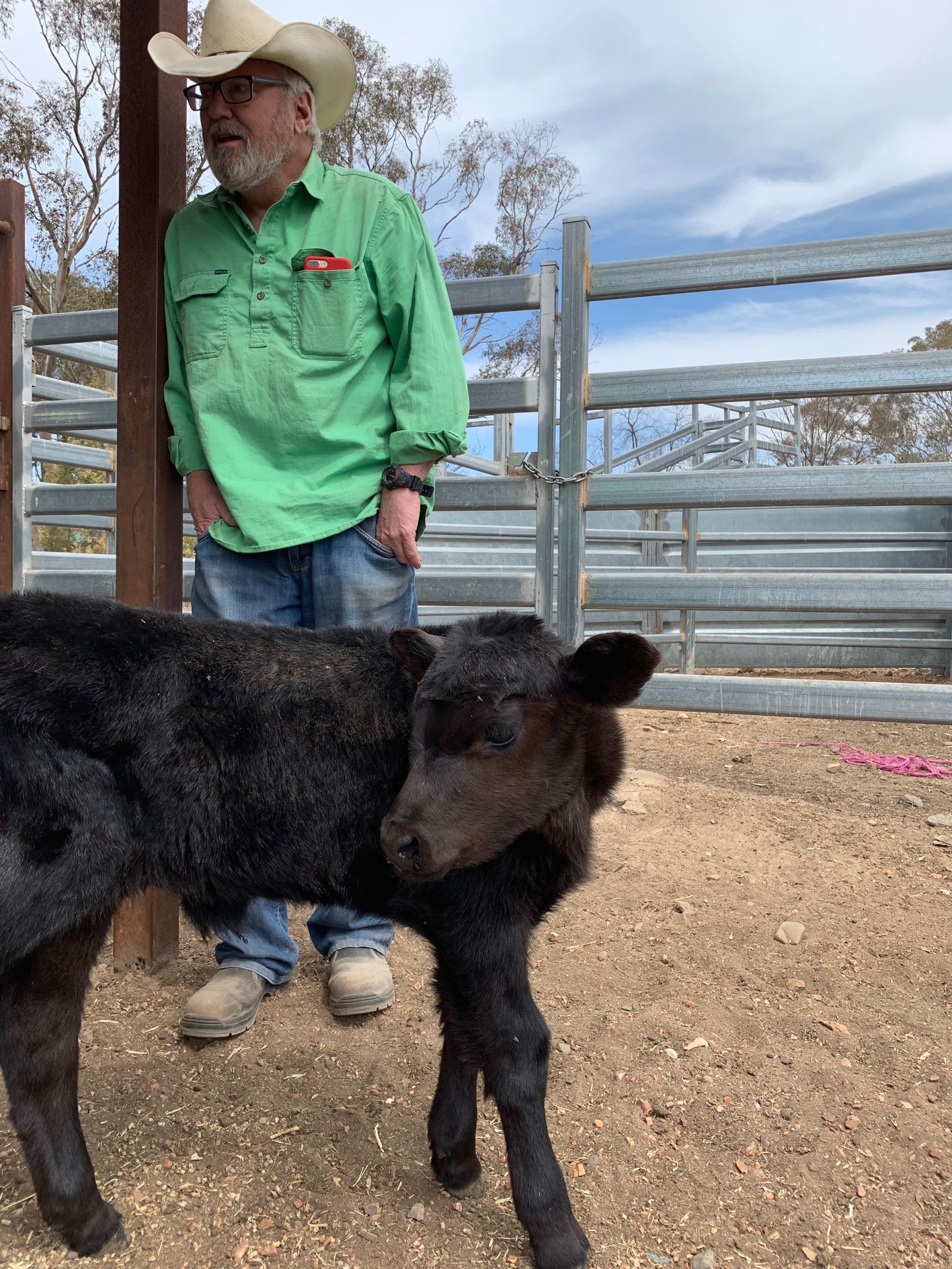
One of six orphaned calves. source: original
One of six orphaned calves. source: original
The West is Waiting's effort to be heard was rewarded with the recent announcement from the Federal Government of an extra $100 million in funding for drought stricken communities. But, the announcement also sparked the undermining of trust between those on the front line of the drought and the city-dwelling policymakers with the incorrect allocation of funds to a shire not in need of it.
With conditions reaching critical across much of the state, the restoration of trust and a bridging of the divide between farm and city is crucial.
Resources are fast running out for Chris at Stony Batter. By Christmas, the farms finances, spent battling the drought, will dry up along with the Gwydir River.
Should help not arrive in time for farmers like Chris, the agricultural landscape of New South Wales will be damaged beyond repair, and the heart of the nostalgic Australian identity, will wither, as there will be no soaking rain to follow Dorothea Mackellar's lingering words...
Core of my heart, my country!
Her pitiless blue sky,
When sick at heart, around us,
We see the cattle die -
But then the grey clouds gather,
And we can bless again,
The drumming of an army,
the steady soaking rain.
